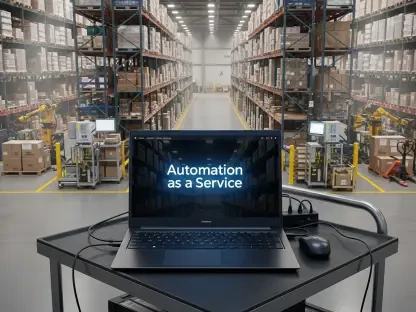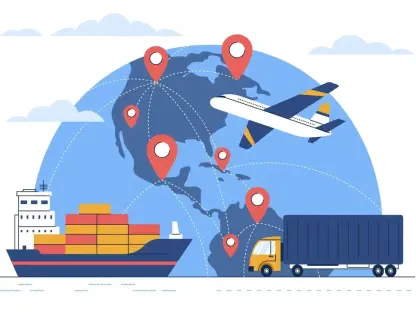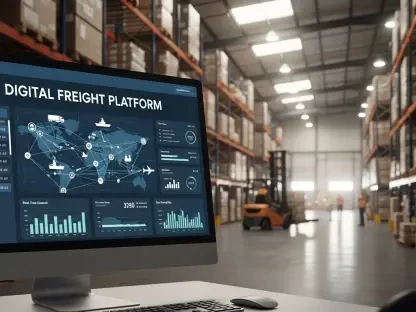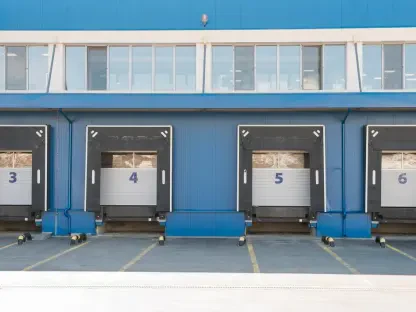Meet Rohit Laila, a seasoned veteran with decades of experience in the logistics industry, specializing in supply chain and delivery systems. With a deep passion for technology and innovation, Rohit has a unique perspective on how policies like tariffs impact the trucking and heavy vehicle manufacturing sectors. In this interview, we dive into the implications of a proposed 25% truck tariff, exploring its potential effects on supply chains, trade agreements, domestic manufacturing, and the broader industry landscape.
How do you see the proposed 25% truck tariff, slated for October 1st, fitting into the broader goals of protecting U.S. manufacturing, and what’s driving this policy push?
From what I’ve observed, this tariff is part of a larger effort by the current administration to shield domestic industries from foreign competition. The idea is to bolster U.S. truck manufacturing by making imported trucks or parts more expensive, thereby encouraging buyers to stick with American-made products. Even though most heavy-duty truck production already happens domestically—about 99% for Class 8 trucks—this policy seems to target the remaining gaps, especially in parts sourcing or medium-duty segments. The timing, right before October 1st, might also be tied to political or economic messaging, showing a strong stance on protecting American jobs and industries ahead of key milestones.
What could this tariff mean for the supply chain of truck parts, especially when it comes to sourcing materials or components from overseas?
The supply chain for truck parts is incredibly complex, with many components like steel, aluminum, and critical minerals coming from abroad, including places like China. A 25% tariff could drive up costs for these imported materials, making the final product more expensive for manufacturers and, ultimately, buyers. We might see shortages or delays for specific parts that aren’t easily sourced domestically. Manufacturers could start looking for local suppliers, but that shift takes time and investment, and it’s not always feasible given the specialized nature of some components.
There’s been discussion about whether this new tariff might stack on top of existing ones. Can you walk us through what that would mean for the cost of trucks?
Stacking tariffs means layering this new 25% rate on top of other tariffs already in place, like those on steel and aluminum. If that happens, the cumulative effect could significantly inflate the cost of building trucks—potentially by thousands of dollars per unit. Manufacturers often pass these costs onto buyers through surcharges, as we’ve seen with some companies already. For carriers and independent truckers, that could mean tighter margins or the need to raise rates, which might ripple through the entire logistics industry, affecting shipping costs for goods.
How does this tariff intersect with the U.S.-Mexico-Canada Agreement (USMCA), especially considering most heavy truck imports come from those two countries?
This is a tricky area. The USMCA was designed to facilitate free trade among the three countries, with specific rules of origin for vehicles to avoid tariffs. But if this 25% tariff overrides those provisions, as some experts suggest, it could strain trade relationships with Mexico and Canada. Last year alone, heavy truck imports from Mexico were valued at over $15 billion, and from Canada at $4.5 billion. Slapping a tariff on those could lead to higher costs for U.S. consumers and might provoke retaliatory measures from our neighbors, disrupting the integrated supply chains we’ve built over decades.
President Trump has pointed to ‘unfair outside competition’ as a justification for this tariff. Can you unpack what that means in the context of the truck industry?
I think this refers to foreign manufacturers or practices that undercut U.S. companies, either through lower labor costs, subsidies, or less stringent regulations. In the truck industry, some foreign players might be able to offer cheaper products because of these advantages, which puts pressure on domestic manufacturers. The tariff aims to level the playing field by making those imported trucks or parts less competitive price-wise. However, it’s worth noting that since most heavy-duty trucks are already made here, the real competition might be in specific niches or with parts, rather than finished vehicles.
The tariff has also been linked to national security and the financial health of truckers. How do you think those factors tie into a policy like this?
On national security, the argument is likely that a strong domestic truck manufacturing base ensures we’re not overly reliant on foreign supply chains, especially for critical industries like transportation. If we can produce our own trucks and parts, we’re better prepared for crises or disruptions. As for truckers’ financial health, the idea might be that protecting manufacturers indirectly supports the broader ecosystem—more domestic production could mean more jobs or stability in the sector. But there’s a flip side: if truck costs rise due to tariffs, smaller carriers or independent operators might struggle to afford new equipment, which could hurt them more than help.
Looking ahead, what’s your forecast for how this tariff might reshape the trucking and heavy vehicle manufacturing industry in the next few years?
I think we’re in for a period of adjustment. If the tariff goes through as planned, we’ll likely see higher costs across the board in the short term, from manufacturing to retail prices for trucks. Manufacturers may accelerate efforts to localize supply chains, but that’s a slow process, and we could face bottlenecks or quality issues early on. Trade tensions with Mexico and Canada might flare up, potentially disrupting the flow of goods. On the flip side, if domestic production ramps up successfully, we could see a stronger U.S. truck industry in the long run. But a lot depends on how the policy is implemented and whether there’s pushback or exemptions. It’s a gamble, and the next few years will show whether it pays off or backfires.









